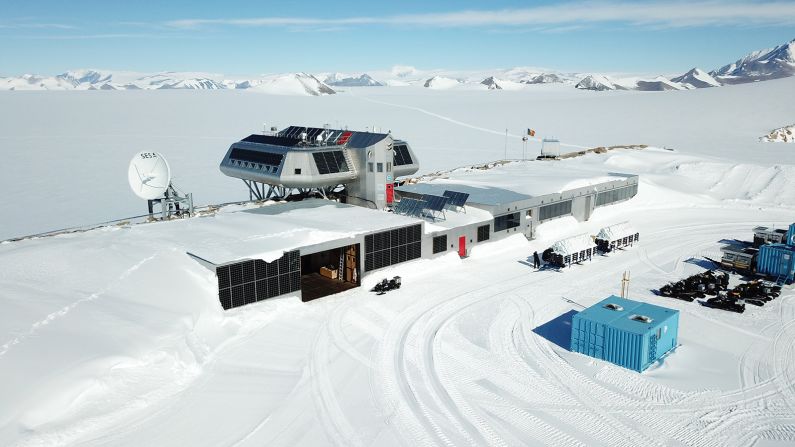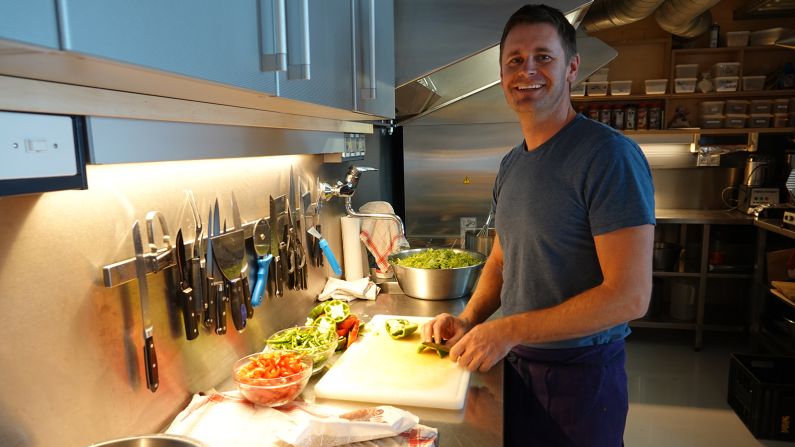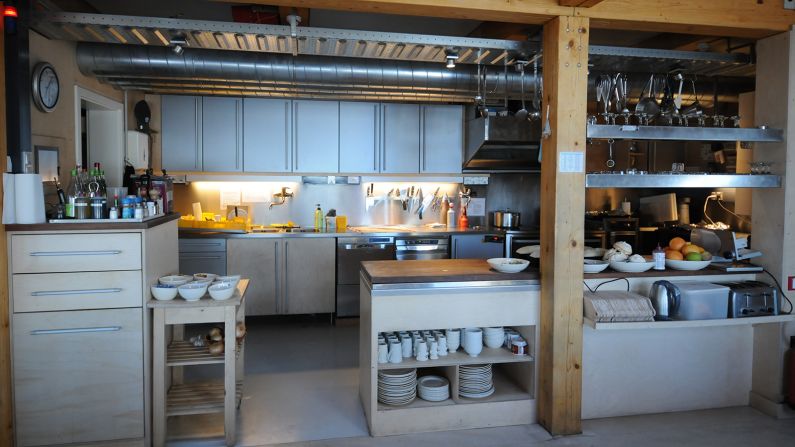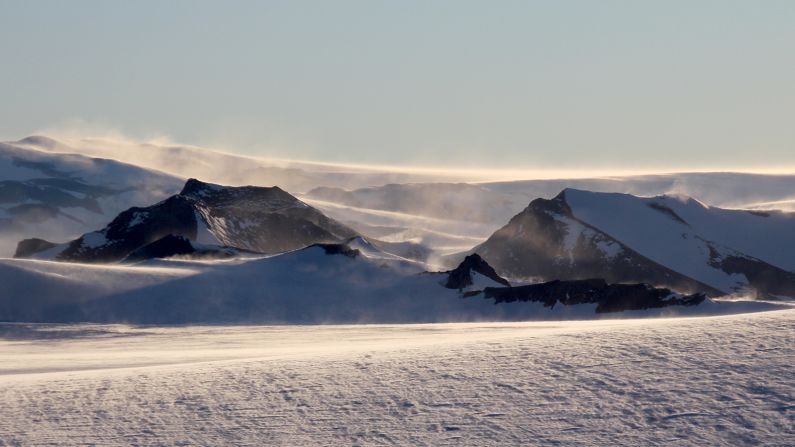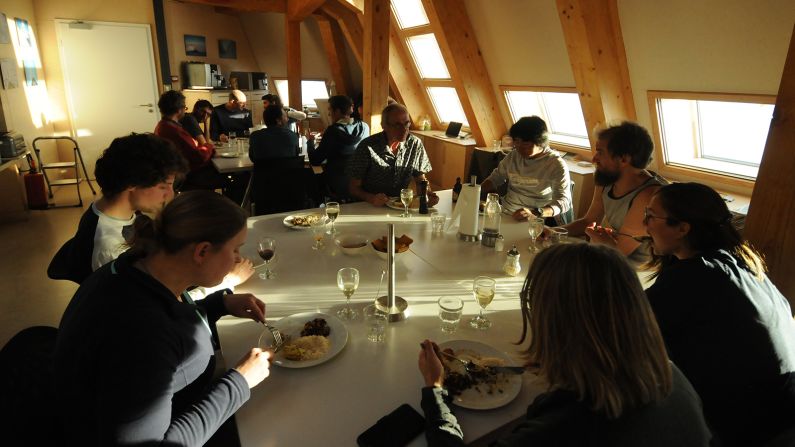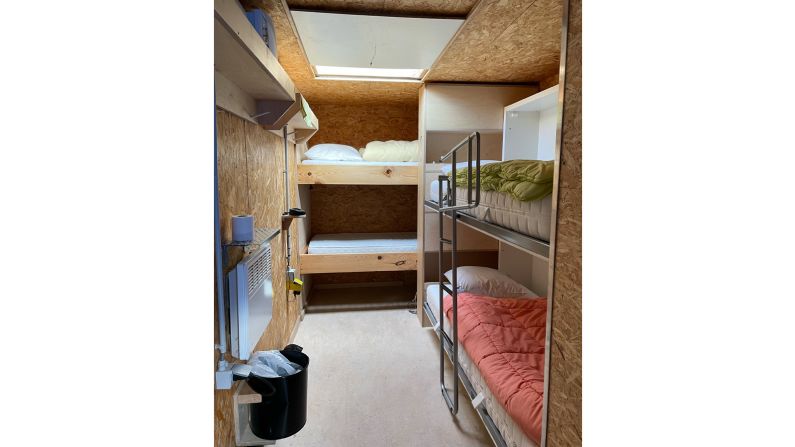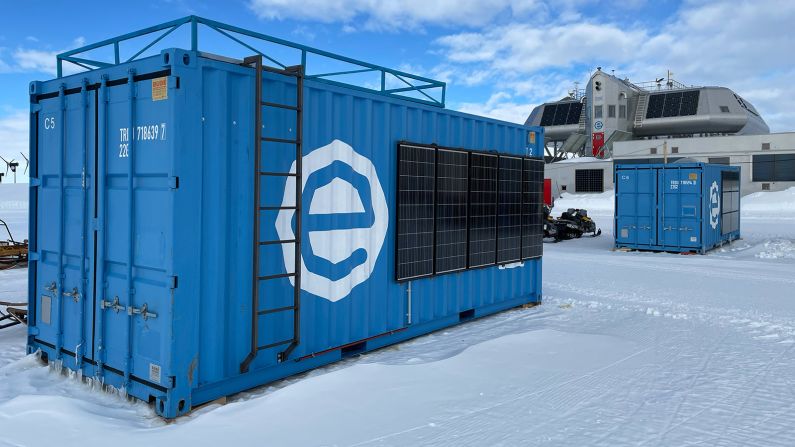No place on Earth is colder than East Antarctica. Due to its higher elevation, not even West Antarctica can touch its hostile temperatures.
Princess Elisabeth, a polar research station in the Queen Maud Land region, faces wind speeds of up to 155 mph (249 kph) and temperatures as low as -58°F (-50°C). A flair for comfort food is understandably a requisite skill for any chef working in this environment.
“As people are outside in extremely cold temperatures and harsh conditions, I like to make something nice and heavy for the body, like fondue and raclette. Lots of it,” says chef Thomas Duconseille, who mans this remote Antarctic post for several months each year.
When there’s a group of cold scientists around 3,100 miles from the nearest city and at least 9,900 miles from home, it makes sense that hot cheese goes a long way. If only the rest of Duconseille’s culinary duties were this straightforward – cooking in these conditions comes with unique challenges.
Seven seasons in Antarctica
Princess Elisabeth is anchored to the ridge beside Utsteinen Nunatak, a mountain known as “the outer stone,” in the S?r Rondane mountain range. Outside Duconseille’s office window lie icy granite mountains and bright white lowlands dotted with in-field accommodation units, laboratory containers, and wind turbines that sprout from the snow.
During the summer months of November to February, the glacial, mountainous landscape is bathed in constant light – the sun slips behind the ridge for just three hours a day. During this time, researchers from Belgium, France, Germany, Turkey, India and the United States use the surrounding 124 miles of mountains, coastline, glaciers, and the Antarctic Plateau to conduct scientific research and to develop strategies to address climate change. Some stay for a few weeks and others might stay for the season. Duconseille, the resident chef at Princess Elisabeth, is there for the full four months. This year is his seventh season in Antarctica.
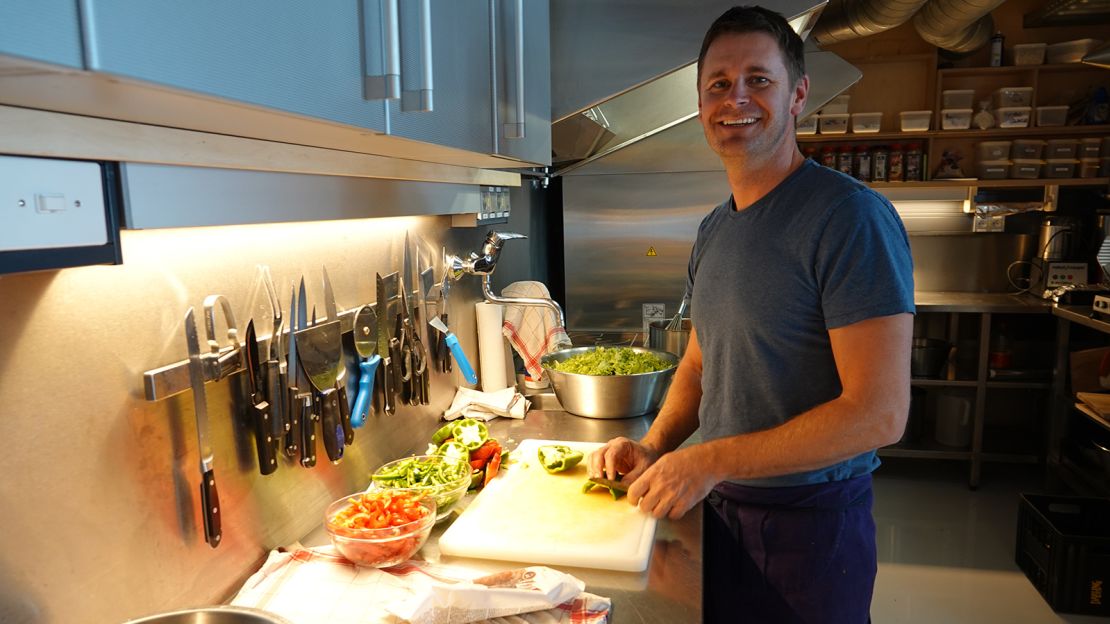
Princess Elisabeth, operated by Brussels-based International Polar Foundation, has been in service since early 2009, making it one of the newer polar research stations. Though it may be young, it’s the world’s first zero-emission polar research station, relying solely on renewable energy in one of the world’s harshest environments. It’s also a sight to behold. Resting atop the ridge, Princess Elisabeth resembles a freshly landed hexagonal spacecraft, its sleek silver panels reflecting the bright whites of the polar landscape.
It’s hard to believe that inside, there’s brioche baking.
“We prepare our own bread and cook it here. Fresh bread is important. I like to make brioche for breakfast with chocolate inside,” says Duconseille. As a Frenchman, good bread is as much a way of life at his post in Antarctica as it is back home in Normandy, or in the Alps, where he spends the better part of the year catering to another breed of explorers on Mont Blanc.
As Princess Elisabeth is a six-hour flight from the nearest city – Cape Town, South Africa – Duconseille ensures meat, fish and vegetables are frozen to last the season and that eggs are stored in five-liter crates with the whites and yolks separated. As for the fresh ingredients, a bundle of these precious goods is flown in every month from Cape Town – providing the weather isn’t too wild.
The challenges of fresh food for a remote outpost
Despite its altitude – 4,475 feet above sea level – Princess Elisabeth remains comfortably warm and protected from the elements thanks to a sturdy combination of woolen felt, heavy-duty Kraft paper, aluminum, wood panels, polystyrene, waterproofing membrane, polyethylene foam, and stainless steel.
“During the summer months, we don’t need to use heating inside the station, because all the radiation from the sun, and our own presence inside the station, is enough to maintain an internal temperature of 20-21°C (68-69.8°F),” says Henri Robert, a science liaison officer at Princess Elisabeth.
Through a hybrid system of nine wind turbines and 408 solar photovoltaic panels, the energy of 100 days of round-the-clock sunshine and ferocious gusts of wind is harnessed to power the station.
“We currently have the sun all day long as we are lower than the Antarctic Circle. Luckily, there’s this mountain to the south of us, so the sun goes behind it and we get a bit of shade for a couple of hours, and then the sun rises again. But it never goes below the horizon,” says Robert, a native of Belgium.
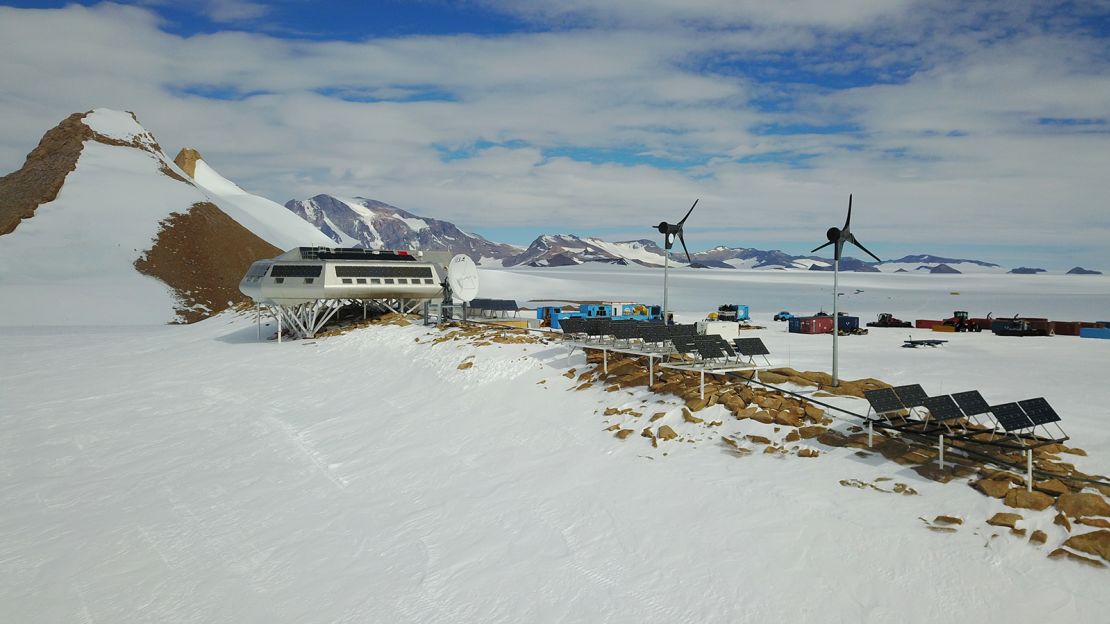
To reach Princess Elisabeth, the crew flies from Cape Town on a DC-3 plane, an aircraft well-suited to transporting cargo and maneuvering icy runways. The flight takes a little over six hours and then it’s a 90-minute journey from the airstrip to the station. Fresh food including vegetables and milk is also transported using the DC-3, and this operation is repeated every month (weather permitting).
It’s a set-up that might strike fear into the hearts of those who regularly rely on that last-minute dash to the grocery store for that forgotten handful of fresh herbs or cup of thickened cream, but Duconseille has adapted to the rigors of the job.
“More and more, I have grown used to waiting a month between fresh food deliveries. Years ago, when I first started the job, it was difficult because fresh food wears fast. With experience, I know what will go bad first, so for the first week, we have a lot of fresh salads. I manage it so I can make these ingredients last as long as possible. Over these four weeks, I am able to manage, and until the fourth week I can still offer something appetizing to eat,” says Duconseille.
Sustenance and food storage
The meals Duconseille prepares at Princess Elisabeth are varied, including soups, meats, pizza, salads, quiches, and desserts. “There’s always a vegetarian or vegan option – so everybody has a variety to choose from,” says Duconseille. For special occasions, like Christmas and New Year’s, the chef prepares dishes including foie gras, turkey with stuffing, and iced nougat.
“As a consumer, I can say it’s like being in a restaurant. It’s wonderful – it’s a full dinner,” says Robert.
The station typically sees between 20 to 30 crew members at once, but over the years the facilities have expanded to support 45 to 50 people. Crew members alternate helping Duconseille in the kitchen by setting the table, drying and storing dishes, or peeling large quantities of potatoes. Sustenance is a group effort.
Given the isolation of the station and the fluctuating crew numbers, it’s important that a reserve of staple food is maintained from season to season. Transporting long-lasting and non-perishable items like grains, beans, and tinned tomatoes to the station is a different beast to the monthly fresh food drops.
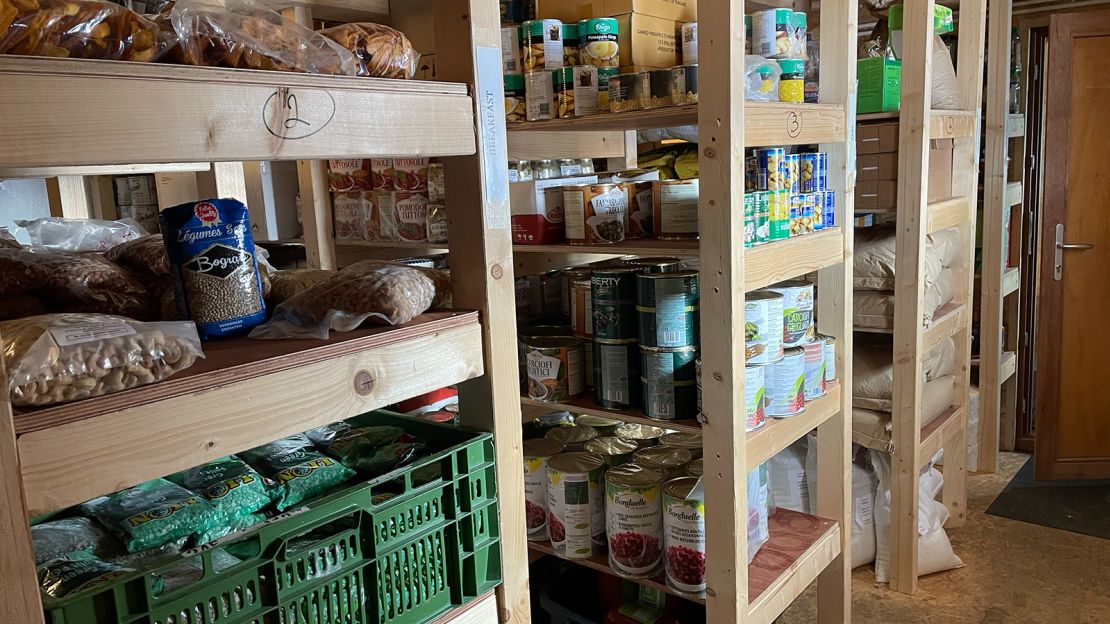
“From Belgium, we fill up shipping containers with a large amount of dried and frozen food and every other year, a ship arrives and supplies us with these ingredients,” says Duconseille.
At the station, food is stored downstairs, where there is a large room with shelving for the dry food, a freezer about the size of a shipping container (-13°F), and a smaller fridge (41-44°F). “We actually have fridges that we need to warm up because many ingredients like certain fruits cannot be frozen,” says Duconseille.
Duconseille doesn’t plan meals in advance, but maintains a strong food inventory, so he knows exactly what’s in the bank. The precious nature of the fresh ingredients means that the position requires adaptability and creativity.
“I cook by feeling – depending on the number of people there, or what food will be going bad soon. It all depends on what we have,” says Duconseille.
As there is a range of polar landscapes to be studied in eastern Antarctica, scientists at Princess Elisabeth head out on regular field trips. The chef plays a vital role in the success of these expeditions.
“These field trips can take two-three weeks and involve four to six people. For this, I need to estimate the meals they will need away from the station. Every time I cook a large meal, I freeze portions so that researchers can take these, defrost, and enjoy, without needing to waste valuable time in the field,” says Duconseille.
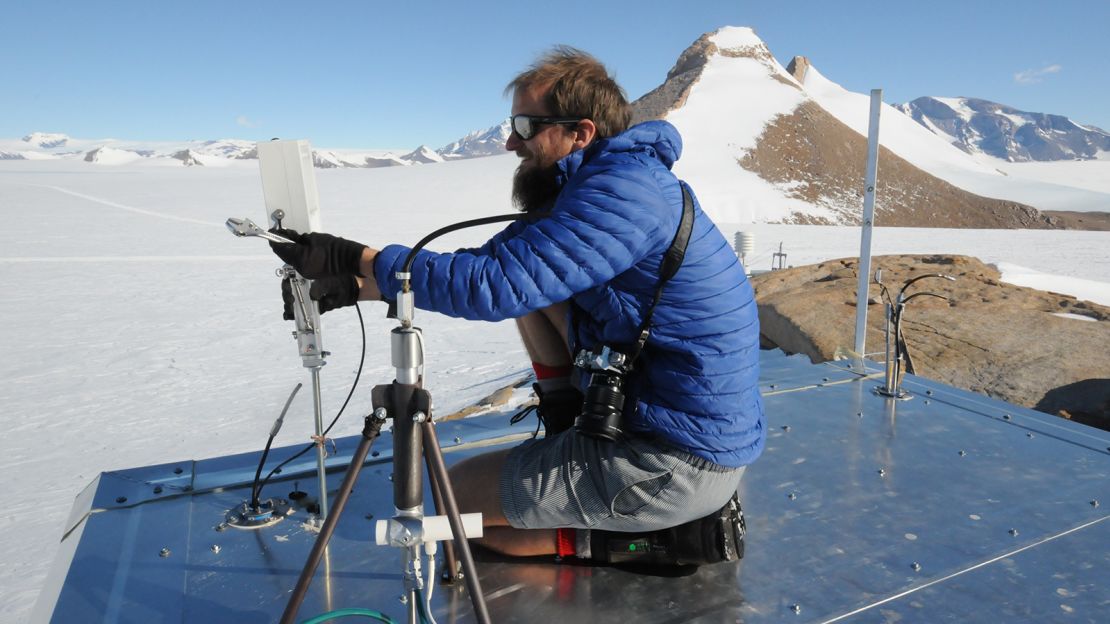
‘I have always been drawn to atypical landscapes’
For the past decade, Duconseille has been a manager at a number of mountain huts in the French Alps, including Mont Blanc’s Go?ter Hut, the highest wardened mountain hut in France.
“I have always been drawn to atypical landscapes, beautiful areas, places at altitude. It’s a small world – the world of people who do this work in these regions – so another cook told the station’s director about me. Working at one place can open new doors, and that’s how I got from the Alps to Antarctica,” says Duconseille.
Outside of the Antarctic summer, he continues his work in the French Alps, providing food, accommodation and assistance to people hiking one of the five routes up Mont Blanc, which rises to 15,771 feet (4,807 meters).
The Princess Elisabeth crew works six days a week. Depending on the conditions, Sunday is fun day. The team is free to accompany field guides and visit the neighboring nunataks, the mountain ridges that emerge from the ice like bony plates on a stegosaurus’ back.
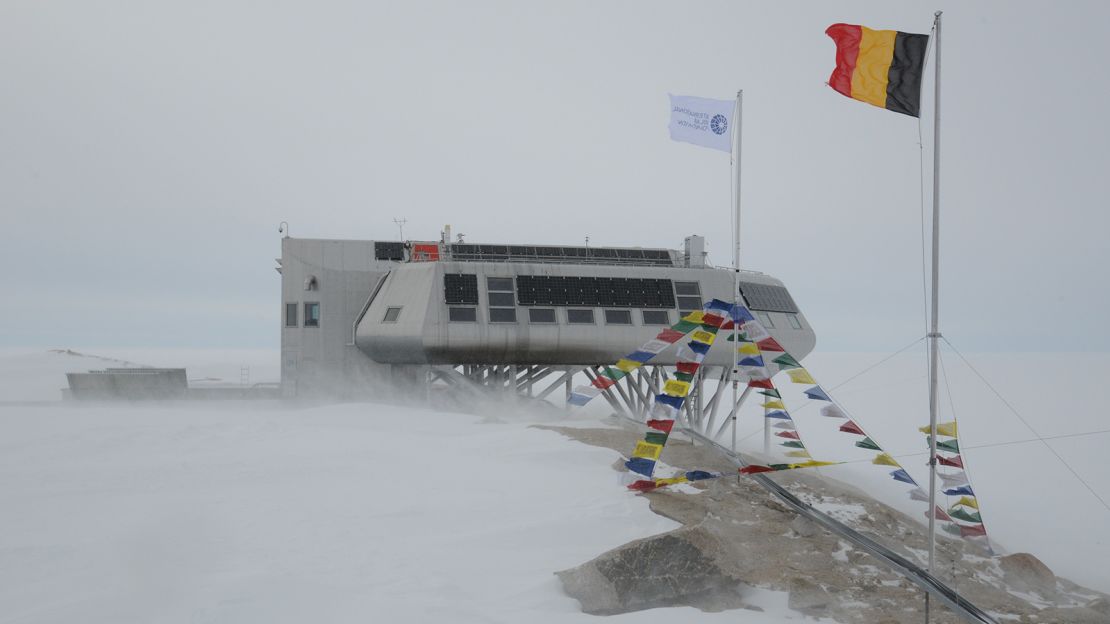
“I enjoy walking in the mountains with the rest of the group, and I’m also a runner, so I like going for a run at the 1.2-mile-long airstrip. But usually, on Sunday, I’ll read, take a nap, and prepare for the week ahead,” says Duconseille.
Some of the team enjoy cross-country skiing. Some take it up a notch, and head to the large slope, for alpine skiing. Of course, there are no ski lifts, so what goes down must come up – that is if you want a second lap. Robert, a biologist and birdwatcher, seizes the opportunity of having such rare access to the White Continent.
“We have 124 miles of ice before we reach the coast. Throughout this area, we have beautiful wildlife, colonies of birds breeding right here – so we are not totally alone. It is always exciting to come here because I’m passionate about birds. When I have the chance, I go to the nunatak and observe the birds that are breeding there, or I’ll rest on Sunday. It all depends on the weather,” says Robert.
Food and morale are intertwined

Duconseille’s experience managing isolated mountain refuges has prepared him for the part of the job that goes beyond providing sustenance: creating a home far from home.
With subglacial lakes, katabatic winds, and a 300-mile-wide crater rumored to be hidden beneath the eastern ice sheet, Antarctica is more than just the world’s most isolated continent: it can seem like another planet entirely. While the station is comfortable and well equipped (Robert described it as being “very pleasant… like a chalet in Switzerland”), the extreme isolation, unpredictable polar weather, and months away from home and loved ones can wear down even the most intrepid.
“In Antarctica, food is important for team morale – it is important to ensure people are happy around the table and gather together after a long day. I like to cook desserts and cakes so that people can be happy at the end of the day,” says Duconseille.
If the chef spends his time bringing joy to the crew in the form of golden brioche and molten cheese, what is it that brings him joy?
“It’s hard for the first few days when I leave my family. But once you arrive, you’re in this environment where you’re work-focused and captivated by the beautiful surroundings. Life is exciting, there is always something happening. We are taking care of a lot of people and scientific activities.”
Leaving Antarctica again is bittersweet.
“At the end of summer, we are happy to come home, but it’s a mixed feeling: we’re sad to leave Antarctica,” says Duconseille. “It’s an incredible environment and a unique life that we have here.”
